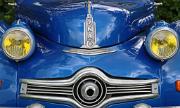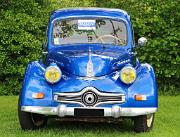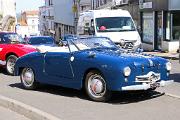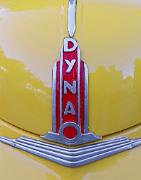
aa Panhard Dyna X87 1952 badged
Panhard Dyna X87 1952 - badge on bonnet. The name 'Dyna' referenced the outlandish pre-war Panhard Dynamique.
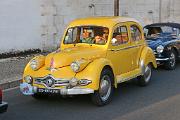
Panhard Dyna X87 1952 front
Panhard Dyna X87 1952. Jean Panhard transformed Jean Albert Gregoire's original AFG design from a 2-door car to a 4-door car. The wing-mounted indicators were given late in 1950. The Dyna was also sold as a 4-door Decouvrable, 3-door Break or Commerciale, and also a 2-door Cabriolet.
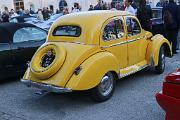
Panhard Dyna X87 1952 rear
Panhard Dyna X87 1952. Panhard's stylist Louis Bionier developed the Dyna X from the AFG original. It then Dyna evolved from 1948 acquiring more decoration each year which deemed it to be 'Baroque' and was nick-named 'Louis XV'. It only acquired paired rear lamps in 1950.
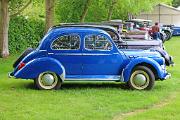
s Panhard Dyna X 86 1950 side
Panhard Dyna X86 1950. Engineer Jean Albert Grégoire designed the Dyna X for postwar France so that his Aluminium company (AFG) would manufacture the body. Jean Panhard simplified the design with a steel chassis to save costs, but its complexity made it more expensive to produce than the Renault 4CV. It was built on an 84-inch wheelbase
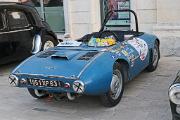
Panhard Dyna XP 1951 front
Panhard Dyna XP 1951. The Dyna X became the basis of many specials. This one was built from aluminium aircraft tanks after the original body was heavily damaged
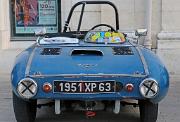
Panhard Dyna XP 1951 head
Panhard Dyna XP 1951. The minimalist styling of this special built from a crashed Panhard Dyna X didn't even include a windscreen for the driver when first constructed.
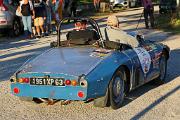
Panhard Dyna XP 1951 rear
Panhard Dyna XP 1951. This special built on a Panhard Dyna X is known as the 'Ice Tray'
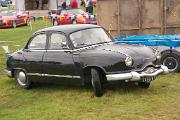
Panhard Dyna Z1 1956 front
Panhard Dyna Z 1956. Panhard gave its Dyna X an 851cc flat twin air-cooled engine which was gradually uprated, achieving 50bhp for the 1958 Tigre model.
All images and content of this site is the copyright of Simon GP Geoghegan

